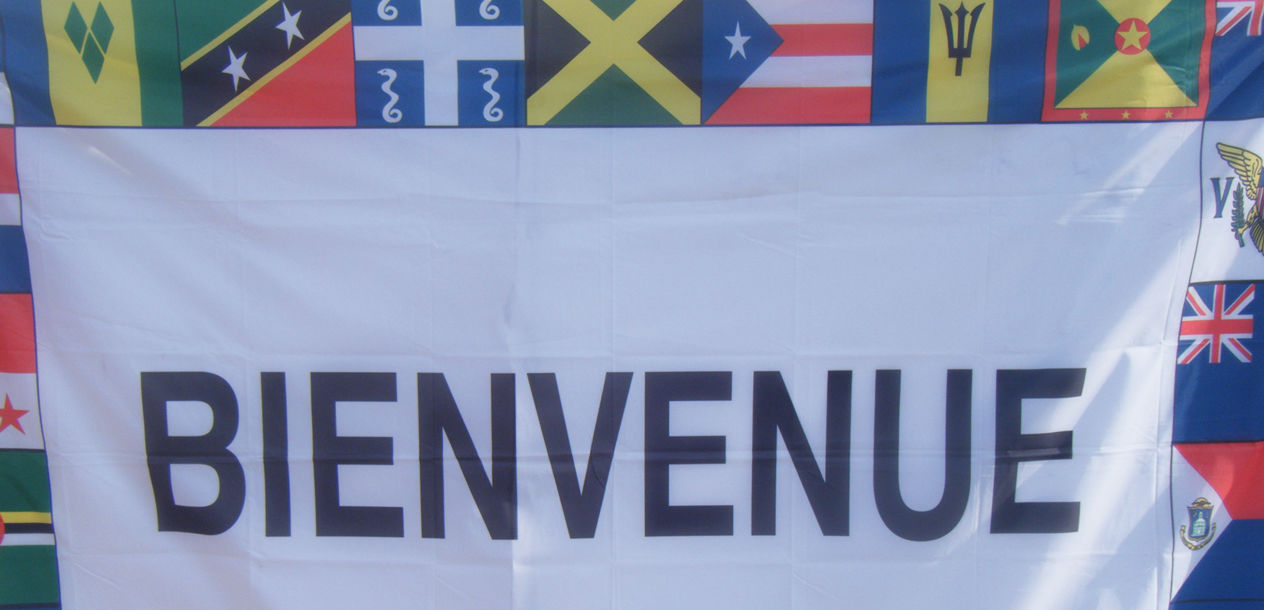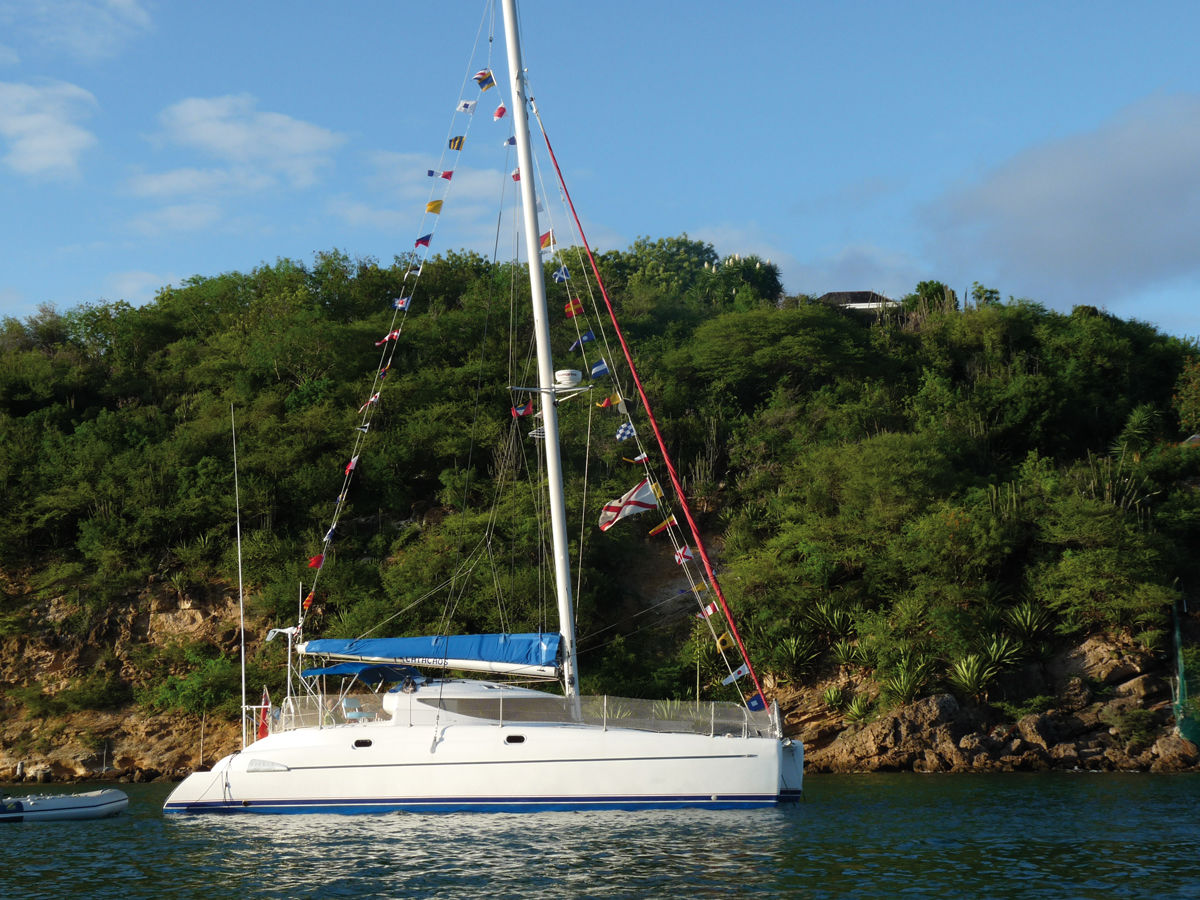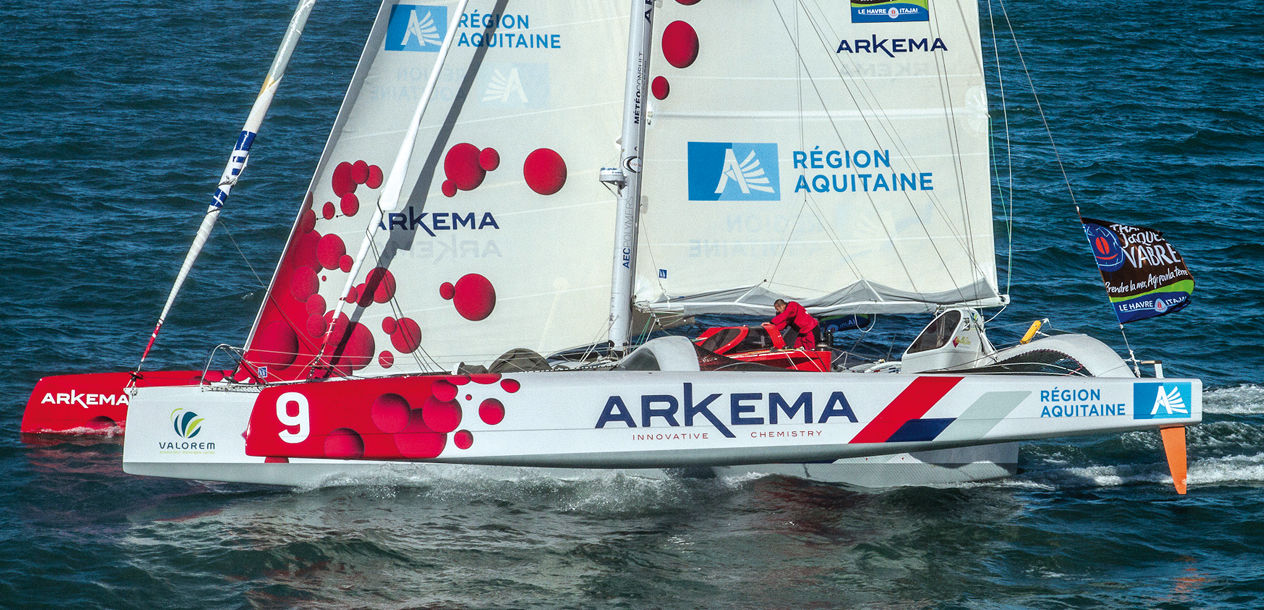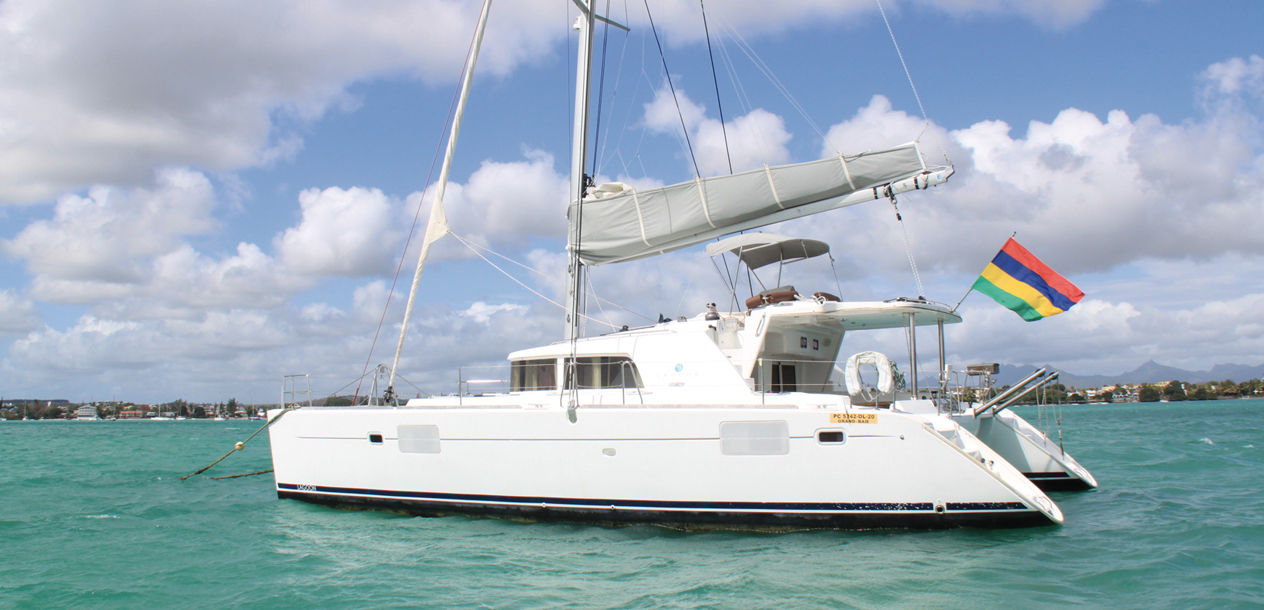
Issue #: 11
Published: August / September 2017
- Price per issue - digital : 6.50€Digital magazine
- Access to Multihulls World digital archives Digital archives
Preparing for your trip, you’ll be imagining the stopovers in all the countries you’ll be visiting, and by extension, all the courtesy flags you’ll need to carry. Ensigns? Courtesy flags? Where, what, how? Here is a little reminder of the rules in force and the customs to respect during your trip with regard to flags…
The ensign is probably the defining characteristic of a ship. Back in the day, it was the only way to know whether the vessel was a friend or an enemy. Today, it makes it possible to know if the ship is in distress, if it wants to communicate with you, or if the captain is on board, for example. In short, flags are still used for communication, and it helps to know how to use them before setting off around the world.

Use of the National Ensign
This subject is part of maritime etiquette that we all tend to forget, and it has a lot of peculiarities.
The national ensign, also known as one’s "colors", is used to identify the ship's nationality and possibly its status. The ensign is definitely not a "flag". This is not the correct maritime term. In Switzerland, as in the UK and other countries, there is a difference between the national flag and the maritime Ensign. In France, even though the appearance is the same as the tricolor flag, it is still slightly different. The width of the strips is progressive: blue 30%, white 33%, red 37%. This gives the impression of identical widths when the ensign flutters in the wind. Logical, since the last slice (red) waves more than the first (blue) that is attached to the mast.
Leisure craft use the same national ensign as the country’s Merchant Navy. It must always be in good condition, because in case of serious deterioration one could be reproached with an act of insult to the national flag. Hoisting and lowering colors are always the responsibility of the captain.

The national ensign must be proportional to the size of the ship. The minimum size seems to be left to the skipper's judgment, whereas the maximum is 1/10 of the size of the boat, with the express condition that the ensign never touches the water or the deck.
For a 15 m boat, the flag will be at most 1.5 m long and 1 m high since the ensigns are in the format 2/3 (vertical width, or “hoist” = 2/3 of the horizontal length, or “fly”). In this example the ensign is very large, but if you like flags…! The ensign must be the largest flag on board.

An ensign is hoisted and lowered. We must not, however, say that we are lowering the national ensign. That would mean surrender to the enemy!
The colors are always hoisted unfurled, the national ensign is therefore already "open".
The ensign must be fully hoisted. It should not be fixed to the backstay (except for sloops which can hoist it on the backstay to two thirds of its height). Failure to respect these two points implies a specific meaning: mourning.

Under way:
Under way in foreign waters the national ensign must always remain hoisted.• sloop rigged vessel: it is placed on a straight staff, at the stern and to starboard of the boat. The flagstaff can be tilted aft, to better present the ensign when there is little or no wind.• ketch or yawl rig, it must be installed at the head of the mizzenmast or on the luff of the mizzen. A small external halyard off the back solves this ...
What readers think
Post a comment
No comments to show.